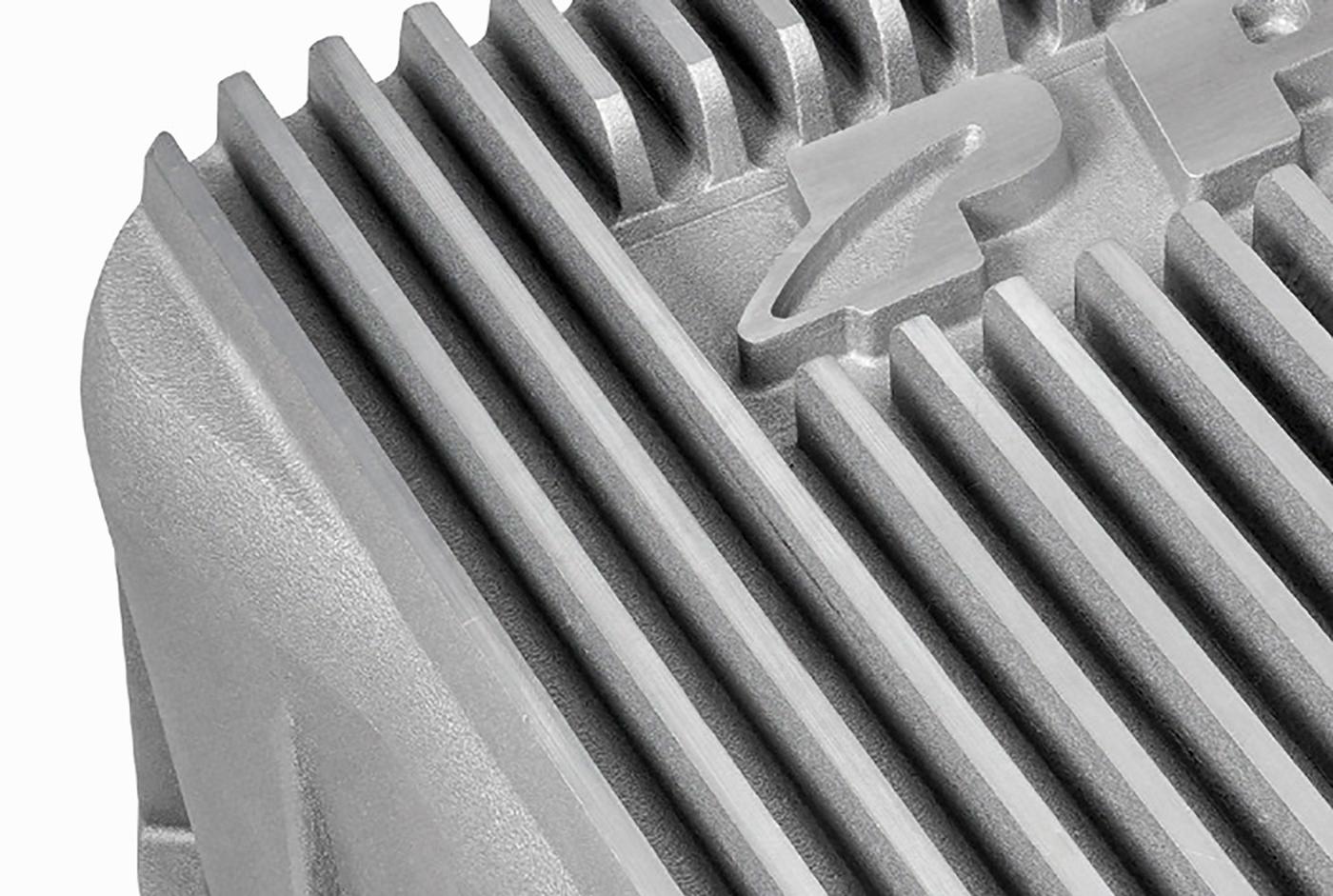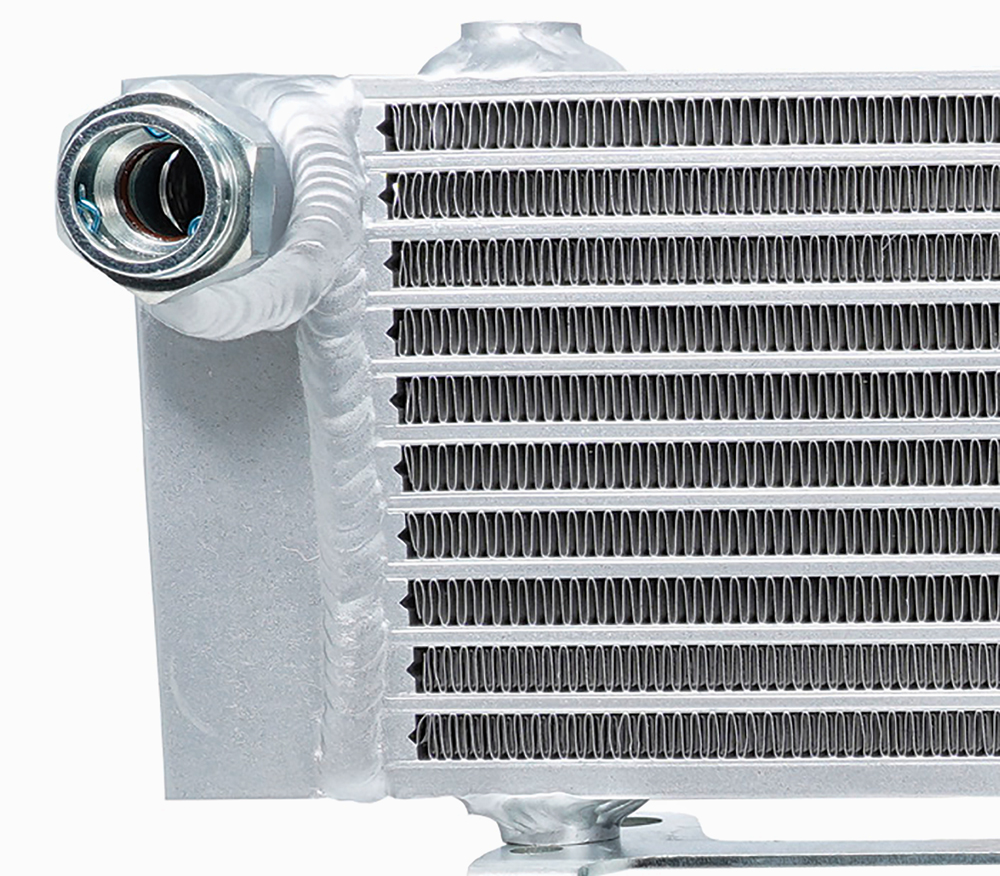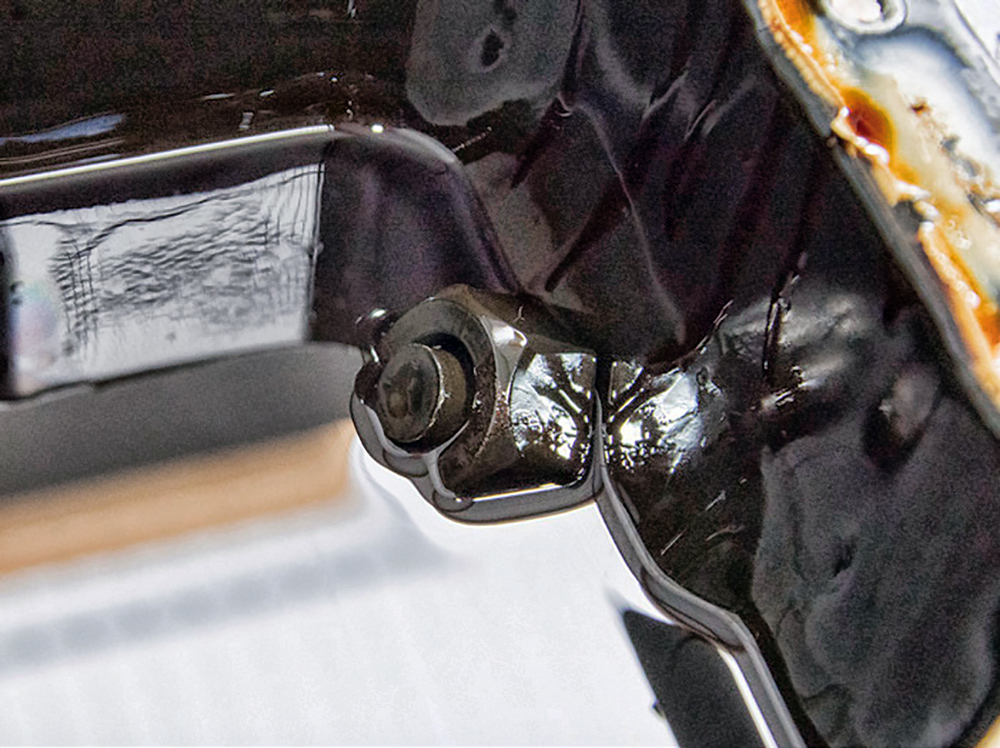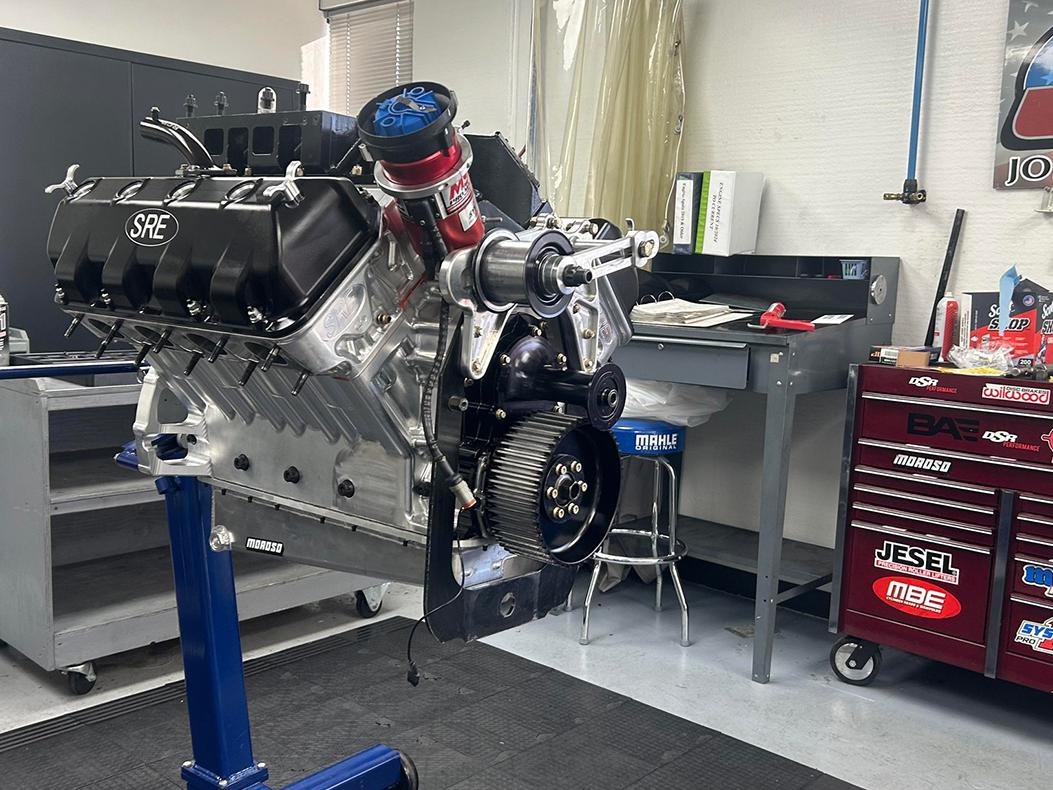PRI Education: Oil Pan and Cover Upgrades

Cast aluminum fins, shown here, add surface area and draw heat away from fluid in the pan. Gussets, meantime, provide strength and rigidity to the housing.
Relying on products designed for street and highway use will prove detrimental once a race vehicle hits the track or off-road course. Consider these guidelines when choosing an oil or transmission pan.
Racers should be aware that there are upgrade options to the long-lived trend for manufacturers to use stamped steel for differential covers, oil pans and transmission pans, along with molded plastic for oil and trans pans. These materials can do a “good enough” job holding fluid in, but they are sub-par when it comes to heat dissipation and, frankly, providing any other benefits.
Setting the Record Straight on Tin
The term “tin” is frequently used when describing stamped-steel materials. Tin is rarely used by itself but rather is alloyed for a particular purpose. For instance, a grocery aisle tin can is a tin-coated steel container. Likewise, oil pans are not made of tin but may be alloyed with both tin and steel. Sheetmetal is simply metal formed into thin, flat pieces. Many different metals can be combined to create sheetmetal, such as aluminum, brass, copper, steel, nickel and titanium.
Plastic Pans: A Discarded Reality
The reality of using plastic for oil and trans pans is that they are discarded as part of the service cycle, only to require the customer to repurchase the same (underperforming) pan. It’s also worth noting that plastic pans can warp, melt and fracture upon impact. Molded plastic also acts as an insulator, holding in damaging heat.
Quality and Performance Cost More
The process of casting aluminum alloy is not cheap, so a replacement part will cost more. However, cast aluminum alloy is much better at heat dissipation than stamped steel or plastic. Aluminum alloy conducts heat at least three times better than mild steel. So, all things being equal, a transmission with an aluminum pan will cool the fluid three times faster than one with a stock steel pan (depending on the environment).
Adding to the cooling benefits of cast aluminum are fins, or raised surfaces, on the outside that act to increase surface area and capitalize on the under-vehicle airflow. Additionally, pans and covers with internal heat sinks help radiate temperatures outward and help reduce the oil sloshing effect. This ensures the oil stays available at the oil pickup and generally eliminates the possibility of oil starvation in hard cornering and heavy acceleration. Finally, some aluminum pans and covers are engineered with cast gussets on the outer surfaces, adding strength and providing rigidity for the housings.
Fluid Volume Matters
Many aftermarket pans and covers offer increased fluid volume over stock. Higher fluid volumes suspend more damaging metal particles, thus offering greater wear protection and extended service intervals. This fluid increase also contributes to lower temperatures since higher fluid volumes take longer to heat up. A nominal increase or decrease of 10 degrees is significant when considering heat’s detrimental effect on fluid, seals and valve-body components.
Another way to increase fluid volume is through the use of inline trans fluid and inline oil coolers. These components also take advantage of free-flowing air to cool fluid. In addition, factory tube-and-fin components can be upgraded to the superior bar-and-plate style of aftermarket coolers for even better cooling performance.

Durability
Cast aluminum alloy is more robust than plastic or stamped-steel pans. If either of these factory parts has contact with a hard surface on the road or is pierced, such as on an off-road trail, it can be potentially dangerous, especially in remote locations. The cast options can last a lifetime, and some manufacturers back up their products with a limited lifetime warranty to the first owner.
Benefits of Drainage and Magnets
Improved drainage is another benefit of upgrading to cast products. Many stock pans and covers now come without a drain plug, which can create fluid showers when servicing. If a stock pan comes with a drain plug, the plug is often located above the bottom of the pan, leaving behind a small pool of heavy, dirty fluid when the pan is emptied. The fresh fluid becomes immediately contaminated with gritty sludge in these cases.
Many of the stock pans also don’t have an integrated magnet, so the abrasive metal grit circulates, potentially causing havoc. The hope is that all particles will get lodged in the filter, but even the best filters don’t catch everything. The better cast pans come with magnet-equipped drain plugs to hold ferrous metals. The best plugs have integrated rare-earth neodymium magnets, which are almost magnetic overkill, but fluid can never be too clean.

Racing Applications
Pans and covers for competition are highly specialized equipment. Options often include billet aluminum, and, in some cases, hand-built pans. Some racers opt for two-piece oil pans that allow for lower crankcase access and inspection without complete removal and replacement.
Machined billet offers superior structure compared to cast or fabricated options that can crack or fail at the welds due to vibration. However, the cost of billet products is significantly higher since the manufacturing process removes up to 95% of the raw material.
Some specialized pans have a sump chamber to keep the oil from pooling away from the pickup. A windage tray is used to cap the sump and helps keep the oil trapped. Baffles are also added to the floor of the sump to minimize sloshing.
The dry sump is widely considered the ultimate oiling system for internal combustion engines. Demonstrating this is the fact that all Formula 1, Indy cars, Le Mans, sports racing cars, and Super Stock cars use dry sumps. Traditional wet-sump oil systems are less capable of minimizing the fluid movement that occurs when high G-forces cause the oil to move away from the oil pickup, which creates a pressure drop. This is particularly harmful when the engine is spinning at 6,000-plus rpm.
The dry-sump system eliminates these problems by providing constant oil pressure. Other benefits are the ability to use a shallower pan, horsepower increase by eliminating the parasitic drag due to oil sloshing into the rotating assembly, and overall cooler oil.
Final Consideration
Depending on how hard a vehicle is driven or raced, one constant remains: Seals, rings and sensitive valve-body components do not perform well at even moderately high temperatures, especially for extended periods of time. In these conditions, the reality of greater wear and reduced service life is inevitable. Adding easily bolted-on aftermarket products increases cooling, rigidity and fluid volume, and makes servicing these high heat-generating components easier. The decision to upgrade is something every consumer should consider.
Michael Eckerson is the Design Department Manager for Pacific Performance Engineering (PPE) in Montclair, California, where he oversees full-scope brand unity, coordinates product placement, marketing, and assists with product development. Eckerson is also the Editor In Chief of Drive! Magazine, which is distributed in the western United States.
 MEMBERSHIP LOGIN
MEMBERSHIP LOGIN JOIN PRI
JOIN PRI


